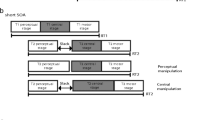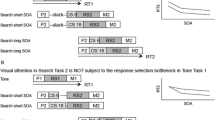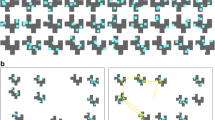Abstract
Human beings can obtain visual information in parallel through the retina, but they cannot pay attention to all the information at the same time. In psychological studies, the human characteristics of visual attention have often been investigated by analyzing the characteristics of the visual search task. Previous studies suggested that the information features of the visual search task are processed in parallel at early stages of processing. However, the authors consider that these features are not processed completely in parallel, and have a reciprocal action to each other. In order to clarify the reciprocal action of the features in a visual search and the continuity of visual attention, the characteristics of reaction times were measured with changing forms of visual stimuli. The experimental results suggested that the reaction time changed when the features of the visual stimuli in the visual search task changed. This means that the features are affected by each other. Furthermore, continuity of reciprocal action is also suggested, and the degree of visual attention is decided by this continuity. The results provided significant basic data to support our proposed mathematical model of visual attention.
Similar content being viewed by others
References
Yokosawa K (1994) Multiresolutional model for analysis of visual attention and visual search performance (in Japanese). Jpn Cogn Sci 1(2):64–80
Yokosawa K, Kumada T (1996) Visual search—phenomena and processes (in Japanese). Jpn Cogn Sci 3(4):119–138
Treisman A (1986) Feature and objects in visual processing. Sci Am 254(11):114–124
Treisman A (1992) Spreading suppression or feature integration? A reply to Duncan and Humphreys (1992). J Exp Psychol: Hum Percept Performance 18:589–593
Humphreys GW, Müller HJ (1993) Search via recursive rejection (SERR): a connectionist model of visual search. Cogn Psychol 25:43–110
Wu JL Mizuhara H, Nishikawa Y (1998) Measurement of human visual and auditory characteristics for a virtual driving system. In: Sugisaka M (ed) Proceedings of the International Symposium on Artificial Life and Robotics (AROB III), Beppu, Oita, Japan, Jan 19–21, 1998, pp 715–718
Wu JL, Mizuhara H, Nishikawa Y (1999) On human-related characteristic between visual search and speech perception (in Japanese). Trans Inst Syst Control Inf Eng 12(2):98–105
Joseph JS, Chun MM, Nakayama K (1997) Attentional requirements in a “preattentive” feature search task. Nature 387:805–807
Author information
Authors and Affiliations
Corresponding author
About this article
Cite this article
Mizuhara, H., Wu, JL. & Nishikawa, Y. The degree of human visual attention in the visual search. Artif Life Robotics 4, 57–61 (2000). https://doi.org/10.1007/BF02480857
Received:
Accepted:
Issue Date:
DOI: https://doi.org/10.1007/BF02480857




